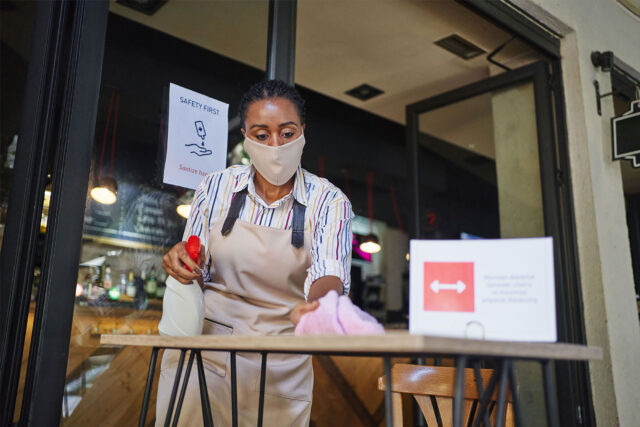California is in the midst of a strong recovery in employment after the severe shock of COVID. As of March, the state had recovered 89% of the jobs lost during the spring of 2020. Sectors have recovered at different rates—for example, leisure and hospitality jobs remain a bit behind pre-pandemic levels whereas transportation and warehousing jobs are well ahead. The recovery has also been uneven across workers and regions, but in surprising, and perhaps promising, ways. Racial and regional disparities in unemployment have narrowed over the course of the pandemic—an encouraging sign that the state might be on the path toward an equitable recovery.
Recessions and recoveries have a long history of deepening inequities across racial/ethnic groups. Unemployment among Black and Latino workers in the US, for instance, tends to spike more severely during recessions than it does for white and Asian workers. These effects then worsen already-elevated unemployment rates for Black and Latino workers. Differences in sectors of employment, which can be more or less sensitive to recessions, are a major driver of this historical pattern.
Similarly, recessions have typically spiked unemployment rates in inland California more than at the coast. This in turn exacerbates regional disparities since inland unemployment rates have been persistently higher than those on the coast, even in good economic times.
The COVID recession and recovery are exhibiting different patterns, and as a result, some of the preexisting disparities in unemployment across racial/ethnic groups and regions are narrowing.
Before the pandemic hit, unemployment rates were highest among Black Californians at 7%, compared to about 6% among Latinos and 3% among white and Asian workers. These disparities persisted in spite of a hot economy and over a decade of economic growth. In 2022, even though we are still recovering from COVID, these gaps have shrunk by about a percentage point each. As of the first quarter of 2022, Black unemployment was 3 percentage points higher than white and Asian unemployment, while Latino unemployment was 2 points greater.
Two factors are responsible for these narrower gaps: a smaller spike in unemployment for Black and Latino workers during the pandemic and a faster recovery for these workers so far. First, while Asian and white unemployment was lower to begin with, it nearly quadrupled in spring 2020. By comparison, the spike in unemployment for Black and Latino workers was more moderate, roughly doubling in spring 2020.
Second, Black and Latino unemployment rates are closer to pre-pandemic levels than those of other groups: 6.5% and 5.5% in the first quarter of 2022, respectively. These patterns are driven largely by sectors of work. Though Latino workers are overrepresented in sectors that saw the largest pandemic downturns, like leisure and hospitality, they are also overrepresented in construction and agriculture jobs, which have fared relatively well. Transportation and warehousing is one of the more common industries of work for Black Californians, and the strength of that sector during the pandemic also contributes to the stronger recovery pattern here.
Across regions, unemployment was consistently lowest in coastal California before the pandemic. In January 2020, the Bay Area and Orange County had the lowest unemployment rates in the state at 3%, followed closely by San Diego County at 3.4%. In contrast, the Central Valley and Sierras had the highest unemployment rate, above 8%, and the far northern region had the second highest rate at 6%.
However, during the pandemic, unemployment spiked the most (increasing by 3.5 to 4 times) in the coastal regions and has been slower to recover there. Meanwhile, in the Central Valley, unemployment in March 2022 was 6.8%, well below pre-pandemic levels; in the far north, unemployment in 2022 was also low at 4.6%. Again, this pattern has effectively narrowed the differences in unemployment across the state’s major regions. Unemployment in the Central Valley is now 3.7 points higher than in the Bay Area or Orange County (compared to 5.3 points before). The unemployment gap for the far northern region has narrowed from 3 points to 1.5 points, and disparities have also shrunk notably for the Central Coast and Sacramento regions.
Unemployment is just one measure of economic well-being. It does not reflect how much people are working (e.g., part time or full time) or how much they are earning—nor does it capture people’s employment benefits or work conditions. Furthermore, differences in unemployment and labor force participation persist across groups.
Nevertheless, a strong recovery in employment for groups and regions that have typically lagged behind is promising. Addressing the remaining gaps and examining additional indicators of economic well-being will be key to supporting a continued equitable recovery and reversing long-term disparities. As additional state and federal investments in recovery and economic development across regions unfold—through programs like the Community Economic Resilience Fund—it will be critical to continue targeting these gaps and elevating economic opportunity across the board.




